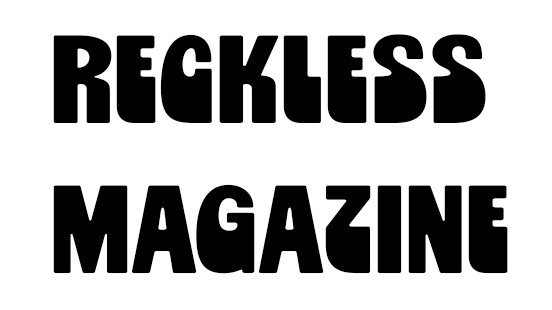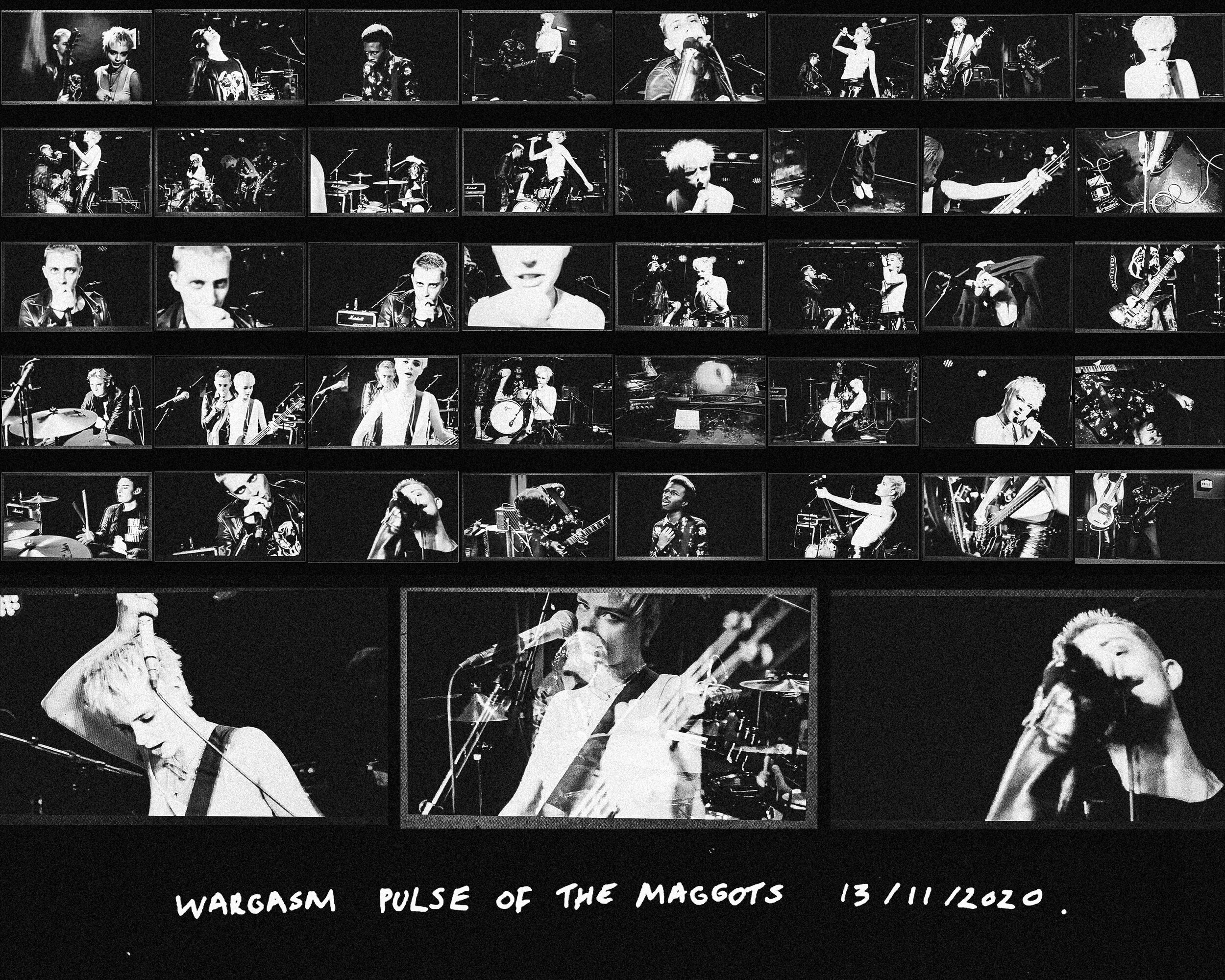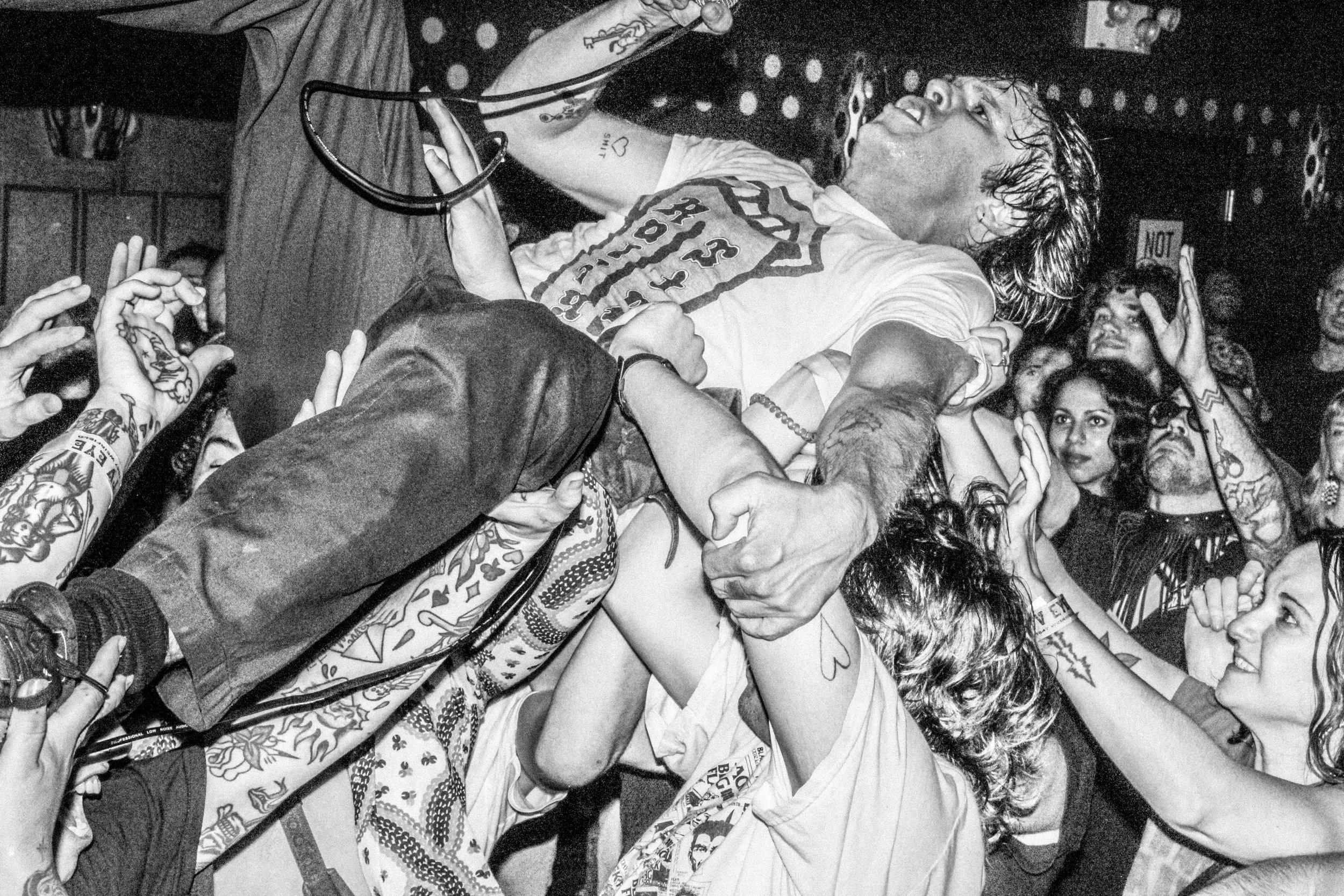Instincts

Subject. Light. Moment. Framing.
Photography By Amdo Photo
Concert photographer Amdo Photo discusses the essence of a great concert photograph, the contrast between being an architect and photographer, and shooting at a forbidden festival.
Geneva, Switzerland
What is your history as a photographer?
Well, that's quite a long story. It all started when I was a young kid, in the 1980's. To me a camera has always been some sort of magical and fascinating instrument. When I was 9, my mom lent me her tiny point and shoot camera for my first school trip to the countryside. I don't think she could have given me anything better to take with me! I came back home with two or three rolls filled with blurry shots of chickens and goats, that was my first "reportage". Then as a teenager the passion and obsession for photography persisted and increased, but for some reason I didn’t considered photography as being a serious activity at that time, it was just pure fun, and I almost completely stopped taking photos when I started studying architecture. Then, one day of 2008, almost by accident, I discovered the work of photographer William Eggleston. It literally blew my mind! After that I immersed myself in the history of photography and explored the work of many masters. And around 2010 I started taking photographs again. It was some kind of rebirth for me.
How did you start shooting live music? Why is it important to you?
Working as an architect is really demanding in terms of time. When I resumed photography, I had to find a subject that could match with my day job and with the fact that my only spare time was at night. Concert photography was one natural option for me, so I went to local venues and clubs with an analog camera, first as a photography training, then in a more deliberate way. Things became more serious around 2014, when I started trying to shoot bigger bands and festivals, and I had to ask for photo passes.
Obviously I love music, the energy of live shows and the ecstatic feeling that can come out of it. But what I appreciate the most with concert photography is the sense of invisibility it gives me. I’ve always been a very shy person, so being able to photograph people doing « their thing » without myself being noticed is a huge advantage to me. I wish I could talk to the musicians I admire and shoot nice portraits of them, but that’s kind of out of my reach for now. Concert photography is the best way I’ve found to interact with them. And to photograph human beings in general.
What is it like being a rock n roll photographer in Geneva, Switzerland? Is there a big music scene?
Geneva clearly isn’t the right place to be a rock n roll photographer nowadays. Things were a lot different in the 90’s and early 2000’s when alternative venues and underground culture dominated. But touring bands seldom have a date in the city anymore. So you have to move in order to catch the most interesting rock bands. There are a few great festivals in the country though, and Switzerland is small, so within a couple of hours you can drive almost anywhere. The problem is that there are far more music photographers in this part of the world than interesting concert opportunities, so photo passes can be quite tricky to obtain, when not simply impossible.
There is of course a music scene in Geneva and more generally in the French speaking part of Switzerland, but I must admit that I have not been following it as closely as I probably should have.
Tell the story behind one of your photographs.
In 2018, a member of the Black Rebel Motorcycle Club management team reached out and kindly invited me to shoot one of their European gigs. They eventually provided a full access pass for the band’s date at Paleo Festival, one of the biggest openair music festivals in Switzerland. This event is usually closed to me, because they only give credentials to photographers who are on direct assignment for a press media, which is seldom my case. So quite ironically, I ended up in this « forbidden » big festival, drinking free beers backstage, close to the band, and shooting their concert directly from the stage on a beautiful sunny summer afternoon. Not to mention that the night ended with a sick late performance from UK punk band IDLES. That was one of the most beautiful days of my concert photographer’s life!
You work as an architect in your day job. How does architecture influence the way you photograph?
That’s an interesting question. Architecture taught me the love for composition, proportions, contrasts and rhythm, and I guess this sensitivity must have had an influence on the way I photograph. But like I said previously, I came back to photography after many years of immersion in architecture, as a reaction to it, as an escape. Since the beginning I’ve been trying to photograph in the exact opposite way I practice architecture. Architectural conception is a long and rational process that requires control, argumentation and power of conviction. By contrast, I keep my photography as spontaneous and self-evident as possible. It has to be understandable without the need of a single word, or title. And I shoot by instinct, without thinking too much.
In your opinion, how would you describe your photography style? How is this style unique from other concert photographers?
Well, it’s mostly classic black and white photography, and I hope it’s expressive, straightforward and pleasant to look at. I like being close to the action, punk esthetics, clear compositions and catching little moments of grace. But to be honest, I’m somewhat suspicious of the notion of style. I don’t look that much for it. If I could chose, I would always be taking close shots. That would be my style. In your face, raw style. Yet some of my favorite shots were made from a distance and under severe shooting restrictions. So I don’t know what to think about style. It’s not that much of a question for me. Above all I try to take good photos, sharp and clearly composed, no matter the shooting conditions. That’s my part, and it’s enough for me.
I don’t know how my style is unique from other photographers, I never think about that. Maybe it’s the equipment I use that is special, because I don’t know many concert photographers who would appreciate working with my tiny street photography cameras!
What makes a great live music shot?
Subject. Light. Moment. Framing. These four parameters are essential to any good photo, regardless of the photography genre. In the case of concert photography, light is usually very challenging and quite difficult to anticipate, and the most interesting and spicy moments are elusive. So yes, good light and good moment are the key to great live music shots I guess. That, and intensity. A live music shot must be intense, it can not survive being a simple and distant description of facts. There must be something added to it. Then a concert photograph can take many forms : it can be a portrait, a detail, a crowd shot, a stage shot and many other things. But its essence doesn’t change fundamentally.
Are there any projects you are working on?
Covid19 hit my close family dramatically in the last months. So I’ve been in the need of taking a break from a lot of things, and I didn’t have much energy for photography. But since a few weeks now I’m documenting the work of a social institution from Geneva that helps young people in the need. I’m just starting, but it’s very interesting and challenging. And I have this ongoing project about insanely stylish people that I run into, shooting their portrait directly on the streets. It’s a long term project, and not an easy one, but I expect to be able to show something hopefully interesting in a year or so.
What's next for you?
To be honest, I’m a bit tired of classic concert photography. Getting a photo pass, travelling, shooting the usual first 3 songs of the gig and then getting back home, all of this is exhausting. I hope I can have a chance to bring my concert photography to another level, like following bands on tour for a few days, shooting their studio session, or documenting the everyday life of some big music festival, this kind of things. And I can’t wait to be able to travel again, India, Ethiopia and California are next on the list!





